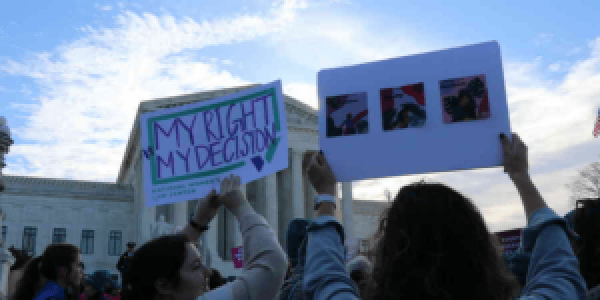Abortion rights, women of color, and LGBTQI+ people are under attack. Pledge to join us in fighting for gender justice.

The U.S. Department of Education’s (“The Department”) Civil Rights Data Collection (CRDC) for the 2017-18 school year shows similar trends to past collections: that girls of color—Black girls in particular—face exclusionary discipline at higher rates than white girls. But another story emerges from the 2017-18 data: the CRDC shows this discriminatory trend holds true for girls of color with disabilities, and we can identify this trend even though the CRDC fails to include some students with disabilities in its calculations.
Exclusionary school discipline includes corporal punishment, expulsions, referrals to law enforcement and arrests, suspensions, the use of restraint and seclusion, and transfers to other schools. Girls of color, especially Black girls and Native American girls, are disproportionately impacted by exclusionary school discipline policies and dress code policies that are created and enforced using sexist and racist stereotypes about “appropriate” behavior. Students with disabilities similarly face high rates of exclusionary discipline, due to stereotypes about typical student behavior and failures to provide legally required supports.
As a result, exclusionary discipline policies push the most marginalized students out of the classroom, costing them valuable learning time as well as having other devastating long-term consequences, such as involvement in the criminal legal system. And because Black girls with disabilities experience biases and barriers based both on their race and their disability, they are at particular risk of being pushed out. Yet relatively little analysis and discussion focuses specifically on the experiences and needs of Black girls with disabilities.

